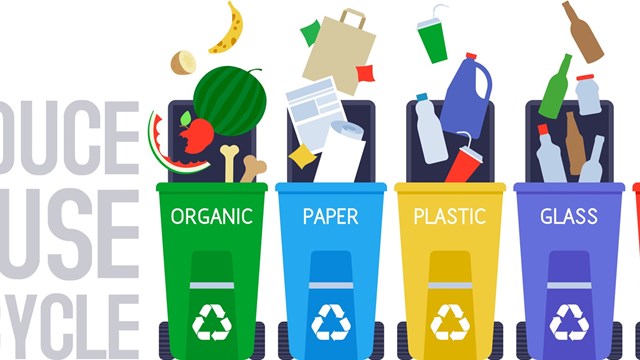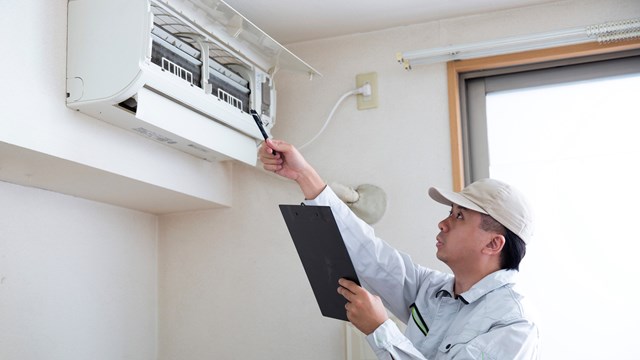
Real estate professionals, developers and builders are all reporting the same thing: today’s homebuyers who are looking for maximum value are asking for more than granite countertops and hardwood floors – they want energy savings and green buildings.
LEED [Leadership in Energy & Environmental Design], a certification program of the U.S. Green Building Council, has become the leading benchmark for the design, construction and operation of high-performance green buildings.
Compared to a conventional home, a “green” home applying LEED standards and technology uses less energy, water and natural resources; creates less waste; is a good fit for the terrain – being built with as little impact on the land it sits on as possible; and is healthier for the people living inside.
Originally only applied to commercial buildings, LEED techniques have expanded to all types of construction, including residential units as well as entire community associations.
Data compiled by the U.S. Green Building Council show that as of April 2009, almost 2,000 homes nationwide have received “LEED for Homes” certification. Another 10,000 are in the process of seeking certification.
For new construction, LEED certification is a major selling point. And while not all projects are seeking the LEED certification – which involves extra work and planning – many are taking pages out of the LEED playbook and using them to achieve considerable energy savings and increased marketability.
Promotes Sales in Down Market
An example of a local LEED project is The Village at Brookside, which wrapsaround the Brookside Golf Course in Bourne, Massachusetts. Vice president of sales Elaine Leonard notes that the project “started construction in 2004 and has 185 units sold, to date, out of 241” at full build-out. “We started the LEED certification process 18 months ago…[and] we've had a very good spring,” she reports, in spite of the slump in real estate sales that lingers in many regions.
“I think people are looking for value and they perceive this as better value,” she adds. “Throughout our model [home] complex, we have marker tags explaining all the features that are built into each unit. Buyers are looking for three things: less maintenance, energy efficiency and a healthier indoor environment.”
Leonard points out that the development at Brookside will increase energy efficiency in a number of ways: with high-efficiency sealed combustion furnaces and air conditioning condensers, programmable thermostats, ducting systems designed to limit air leakage to the outdoors, and Energy Star-approved kitchen appliances, heating, cooling and hot water equipment.
“There are also compact fluorescent light bulbs which cut energy use by 30 percent and dual-flush water closets… this can save approximately 6,000 gallons of water annually,” she adds. Windows are now hi-tech, with low-E coated glass and argon gas inside the panes for superior insulation. Low-E stands for “low-emissivity” which works by reflecting heat back to its source. It does this by utilizing an ultra thin metallic coating on or in the glass.
With more attention on indoor air quality, a major component of the LEED program is concerned with building materials and central air systems. Throughout Brookside, HVAC incorporates a superior air filtration system. Also, interior finishes include low-VOC (volatile organic compounds) carpets, carpet pads, floor tiles, adhesives, and paints.
State-of-the-art gas fireplaces have sealed combustion chambers venting to the outdoors, and Energy Star-rated bath fans have countdown timers to reduce indoor moisture levels.
“A number of innovations are being used to prevent moisture damage,” Leonard continues, such as 30-year algae-resistant roof shingles, covered porches at entry doors help prevent water intrusion, composite trim, deck and rail materials and moisture-resistant materials such as non-paper faced wallboard and ceramic tile—which all help reduce mold growth.
Low Operating Costs
Leland DiMeco, co-owner of Boston Green Realty, is also finding that home-buyers are concerned about saving money on utilities and maintenance. “Consumers are looking at operating costs, above and beyond the selling price. They want to know, what’s the monthly price tag?”
His company is involved with updating urban properties in Boston-area communities such as Cambridge, Medford and Dorchester. “I’m working with a few investors,” states Mr. DiMeco, “…acquiring multi-families and converting them to go green [and] become energy efficient. We’re looking at the big picture, not necessarily to become LEED certified, but to install more passive systems and using less mechanicals. It’s the developer’s responsibility to [build systems that] need less maintenance. It doesn’t have to cost more to ‘go green’,” he continues. “It’s done more through exceptional design, before you start doing the work.”
He points out that in the past, the cost of utilities could put condo buyers over-budget, and “banks didn’t look at the whole picture” in figuring monthly payments. Energy efficient design, he says, “may bring back the condo market... Even lenders want to go green.” DiMeco notes that the implementation of green building techniques can vary considerably from one property to another, and he cites two examples: “While the Macallen Building [Boston’s first LEED-certified residence] went for energy efficiency of the building and interior air quality, another ‘green’ building in Cambridge concentrated on water conservation but not so much the air quality…[as a result] they had some ‘off-gassing’ [chemical vapor release from construction materials]. So sometimes it’s a matter of balancing health issues with cost-cutting during construction. It’s all related to the budget.”
And it’s during construction that many green opportunities can arise. “Are contractors recycling [construction waste]?” DiMeco asks, “Are they using the best insulation and mechanicals? Admittedly, it all relates to the budget.”
He cites a large, contemporary home in Somerville, Massachusetts, that earned a high-level LEED designation. It had a very tight building envelope and included spray-foam and cellulose insulation, bamboo and cork flooring, Energy Star appliances and low-flow water fixtures.
The flat, rubber roof was white, to deflect heat, although a true “green” roof – covered with soil and plantings – would have earned more LEED points. “That choice was made because of cost,” states DiMeco. “That’s the compromise, getting the most green solutions within the available budget.”
So where’s the best place to start? Some of the most practical green applications for community associations are replacement windows, he adds. Window panes are sandwiched with argon or other gases that increase R-values dramatically. Even better are “thermal-mass windows, filled with water,” he says, “so the window panes absorb solar heat that gets released during the night. It’s worth it, to budget in these green solutions for common areas, and help reduce costs and keep condo fees down.”
Low-impact from The Ground Up
Realtor Mark O'Hara, director of sales for C.P. Berry Construction Co., Inc., of Topsfield, Massachusetts, cites a project called Caldwell Farm in Newbury, Massachusetts, as an example of energy-efficient, site-sensitive design. “The state uses this property as a model,” he states. “It won a design award in 2007 for age 55+ attached housing.” The development incorporates 66 two-bedroom units on 125 total acres bordering the Parker River. Only 25 acres are developed, with 100 acres preserved as open apace. “Construction started in 2004,” he reports, “and it’s 90 percent sold-out.”
Although town water services the residences, a well was installed to feed manmade ponds that provide irrigation—and the landscaping is a big selling point. “The buildings use natural gas and there are three (heating) zones per unit, and units are metered separately,” says O’Hara, which all help curb energy waste.
He describes another community being planned later this year with low-impact design, called English Commons at Topsfield, Massachusetts, where 50 units will cover 18 acres surrounded by 50 acres to remain as open space, with a central landscaped area featuring a gazebo and large pond with a fountain. “The plans are for low water-demand landscaping, rain gardens to capture storm water and swales instead of curbing… all to recharge the watershed onsite,” notes O’Hara. “Inside, there is energy efficient lighting, Energy Star appliances, insulating windows and framing that uses extra insulation and sealing.”
Real estate professionals, too, have been responding to the “green” trend in response to customer demand. Michelle Wardlaw, public affairs associate for the National Association of Realtors, reports, “The NAR recently published a survey that found 90 percent of recent home buyers thought energy efficiency was a very important consideration when searching for a home. More and more clients are inquiring about saving energy. To educate clients on what to look for, we’re part of the Green Resource Council… It’s kind of a movement with entire real estate firms getting involved, or individual realtors. Over 2,000 realtors have signed up for ‘Green Designation.’”
To obtain the new designation, realtors must complete a 12-hour core course and 6-hour elective course in either residential, commercial, or property management. Nearly 300 courses are scheduled across the United States and Canada for 2009.
Marie N. Auger is a freelance writer and frequent contributor to New England Condominium. Managing editor Jim Douglass contributed to this report.






Leave a Comment